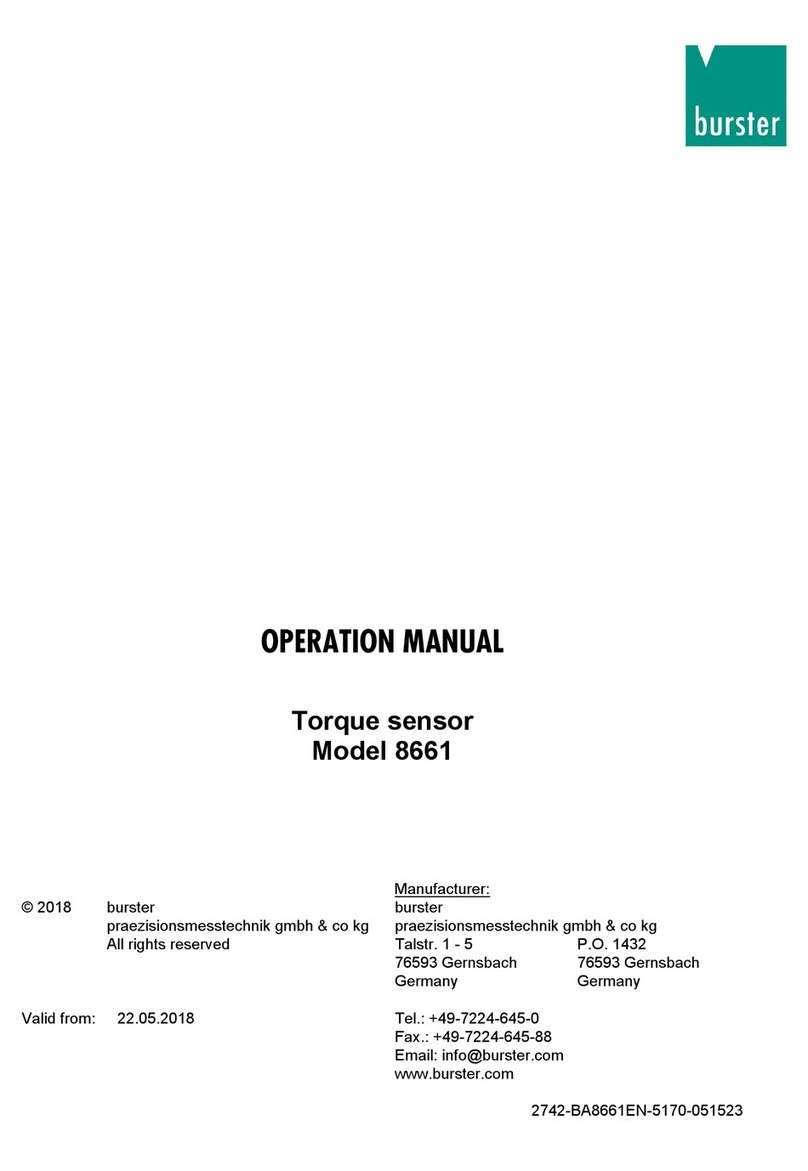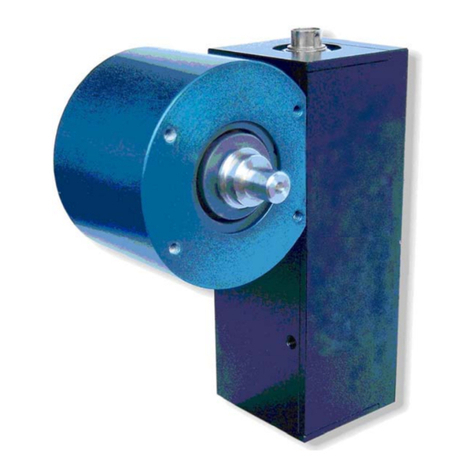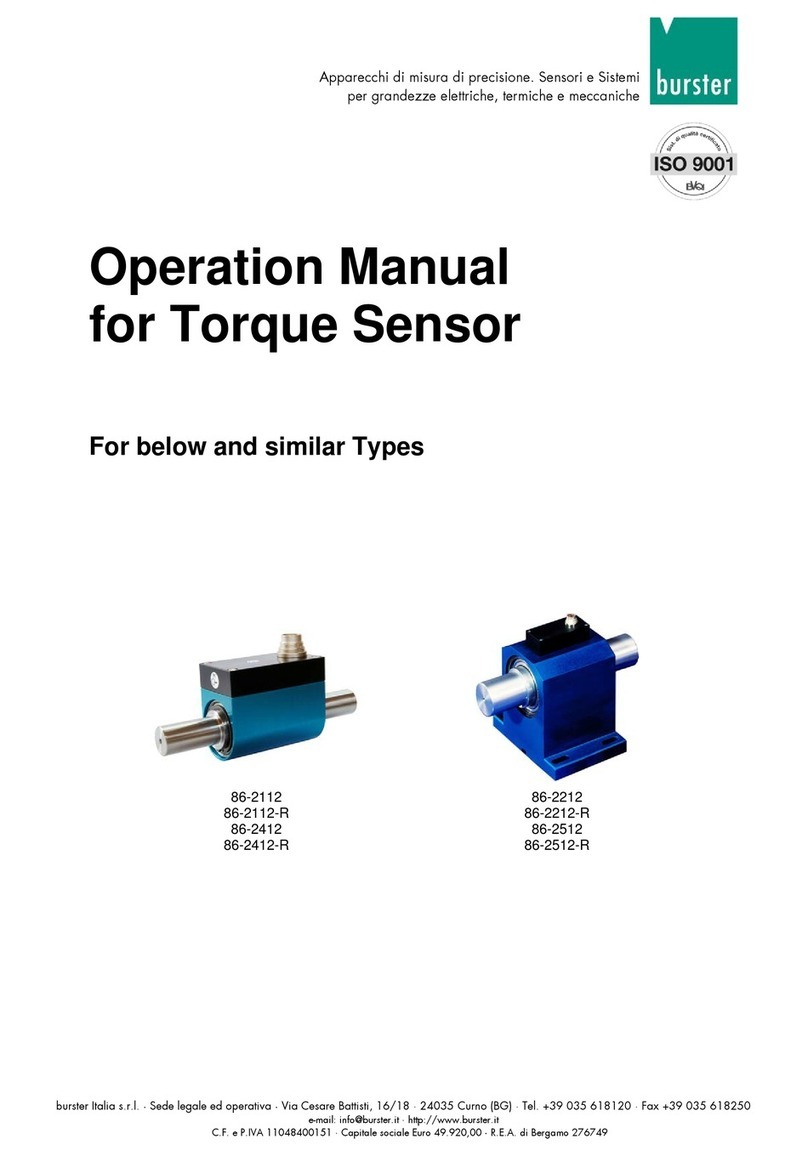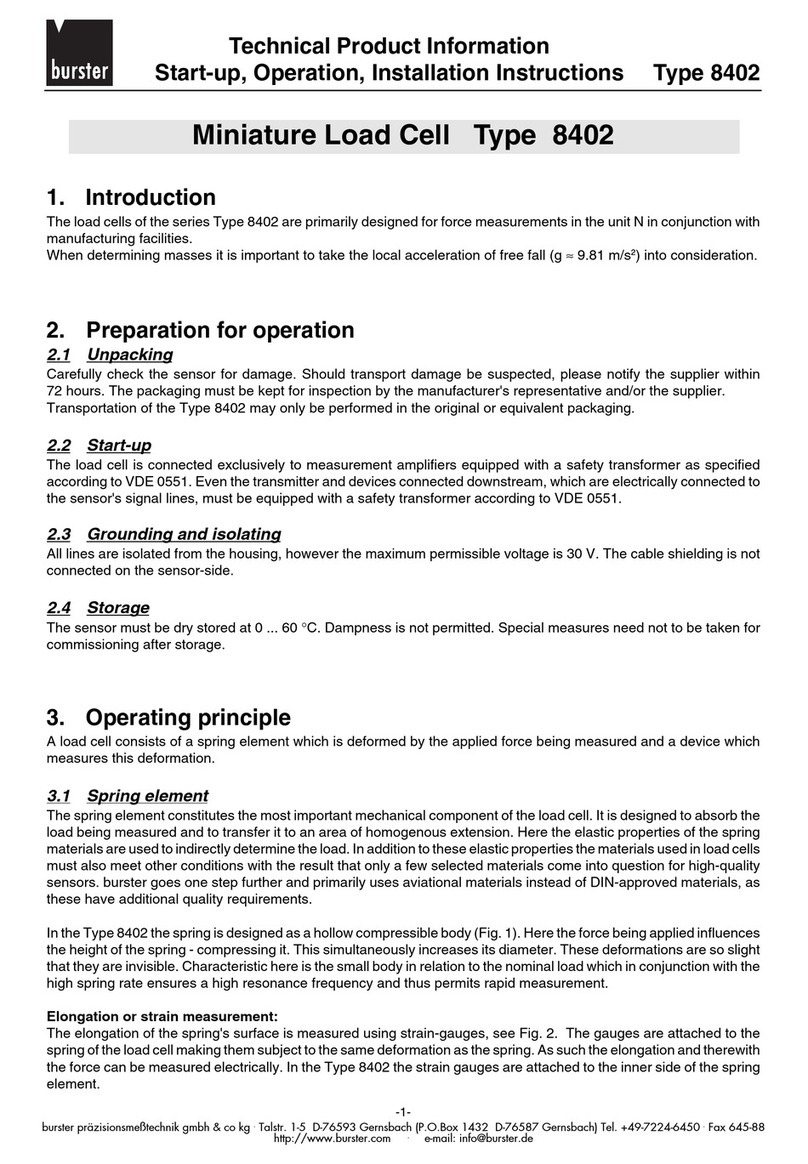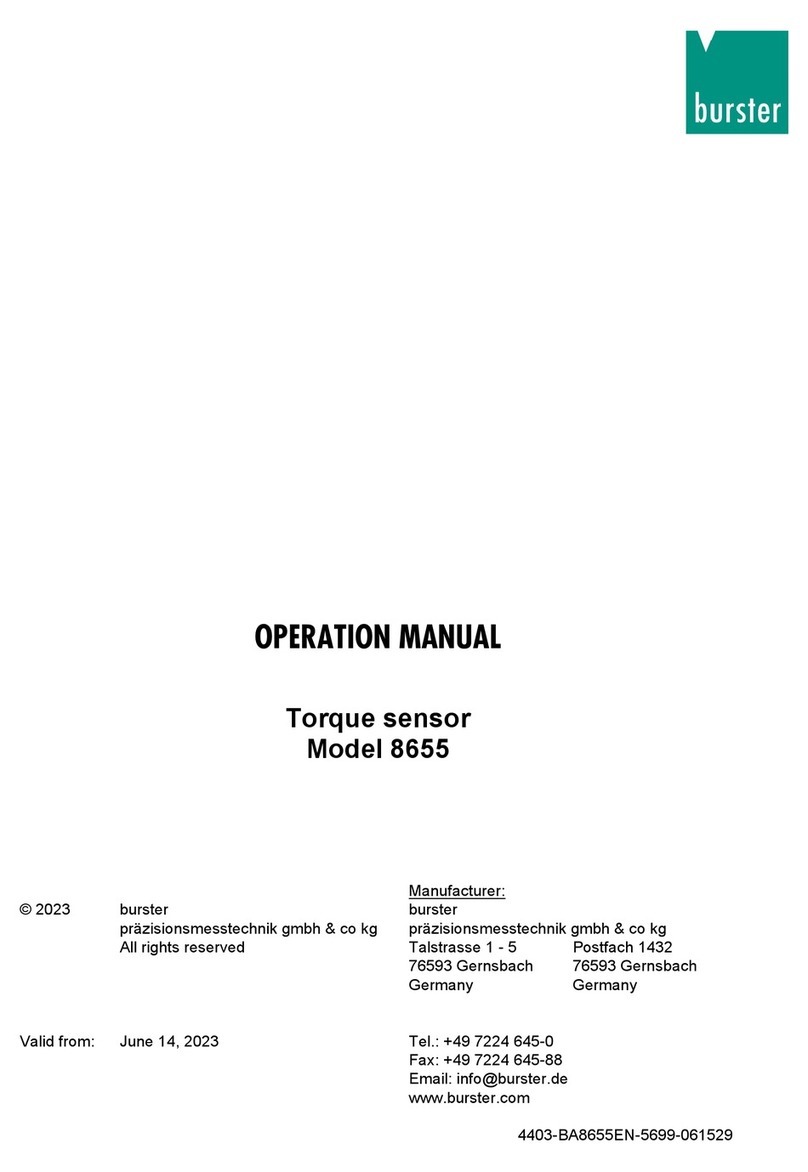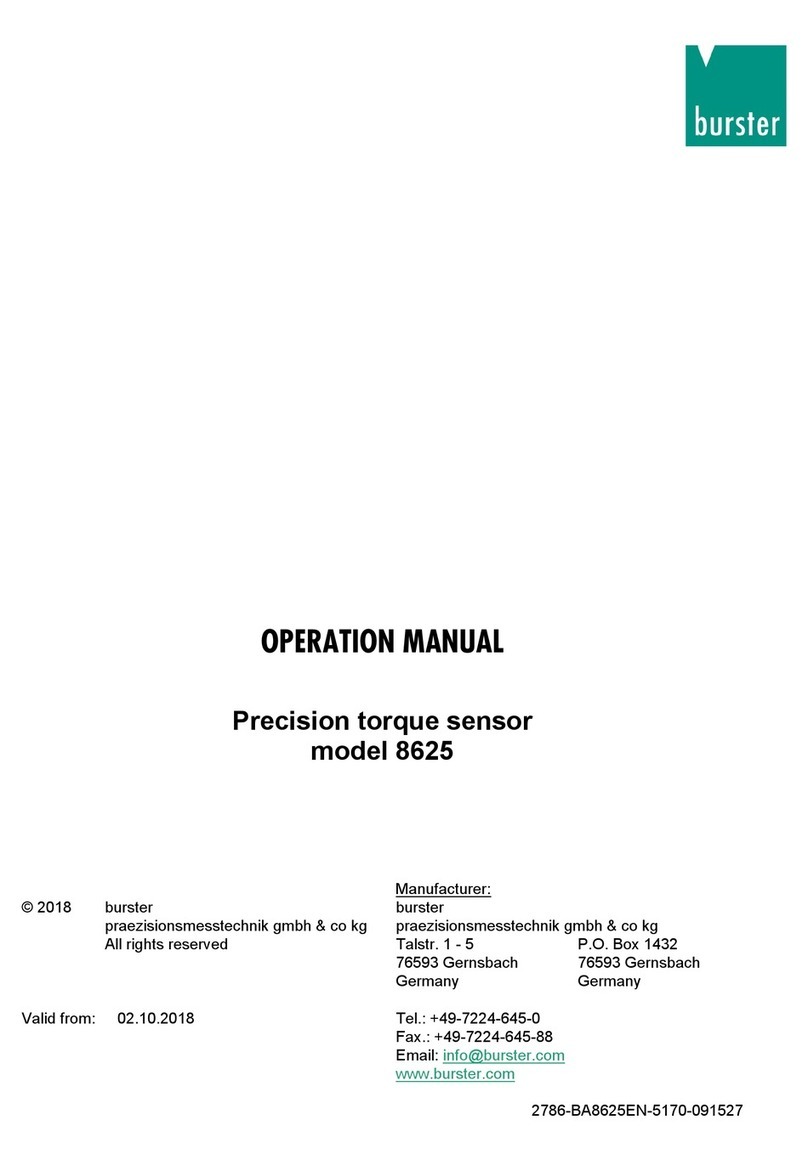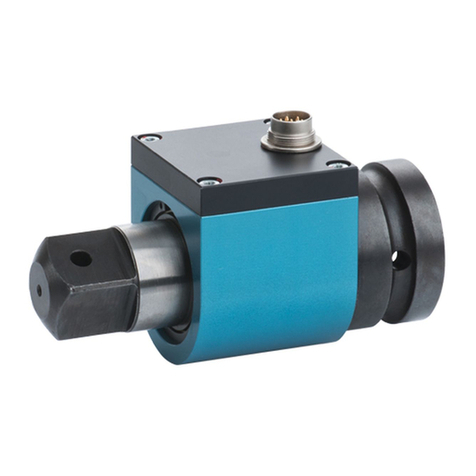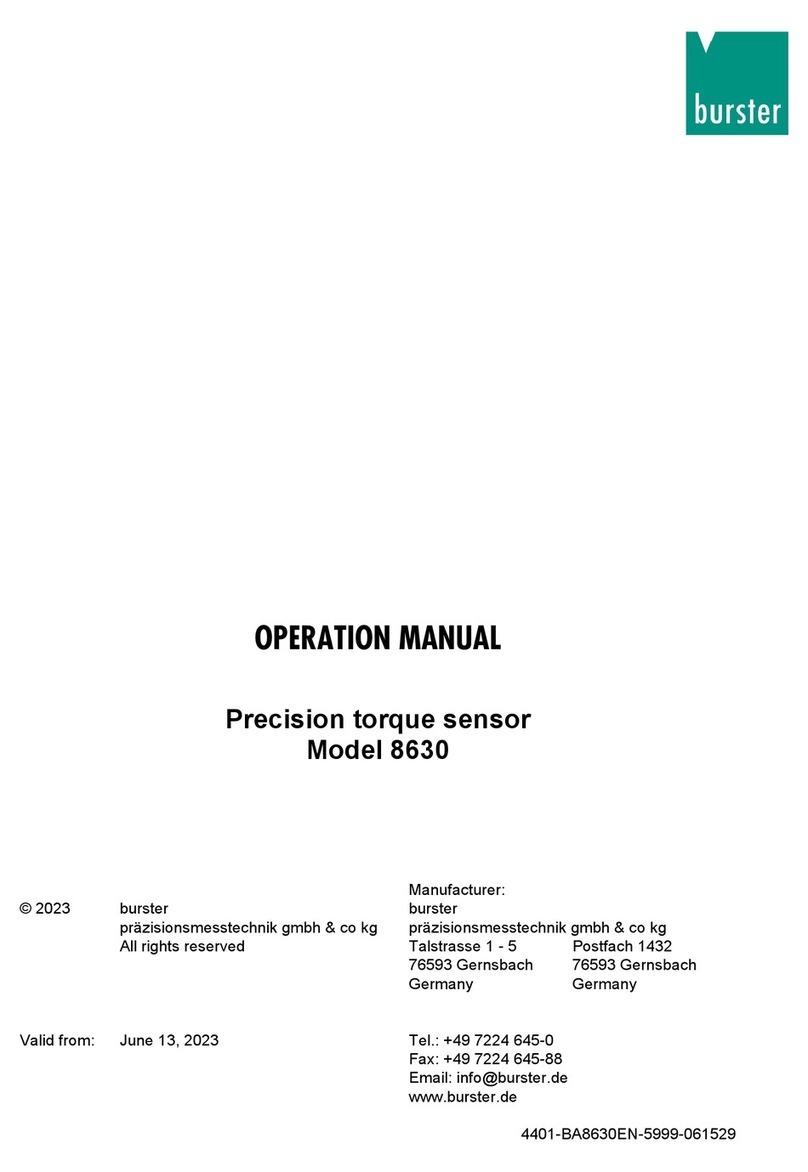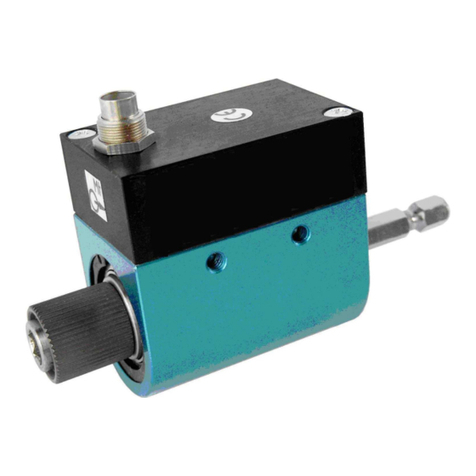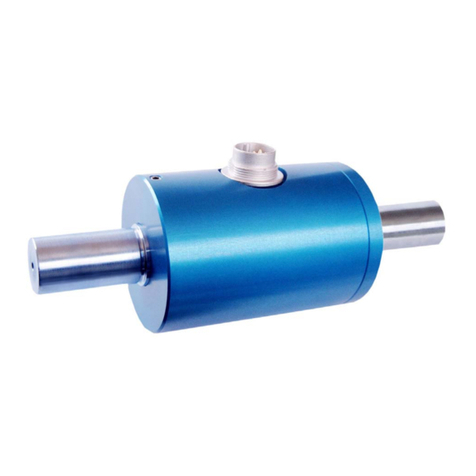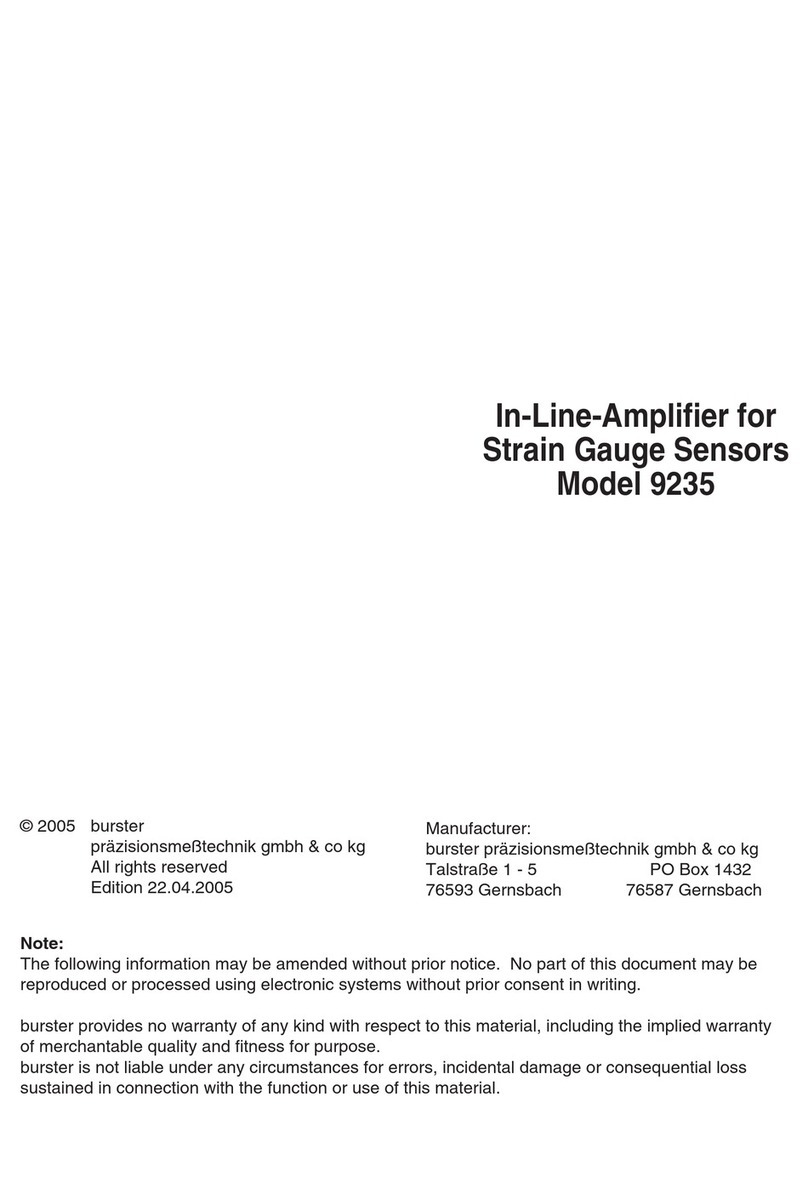Technical inqueries:
(+49) 07224 / 645 - 0
Technical Product information
Commissioning, Function, Fitting Specifications
Model 8402
- 10 -
burster präzisionsmesstechnik gmbh & co kg ■Talstr. 1-5 ■76593 Gernsbach ■Tel.: (+49) 07224-6450 ■www.burster.de ■info@burster.de
4.2 Electrical system, evaluation instrumentation
Caution!
If the cable sheath is damaged, fluids can penetrate and damage the
sensor.
For this reason:
Take suitable precautions to relieve the bending stress exerted by
the connecting cable on the cable bushing at the sensor housing. In
particular, pulsating or alternating loads acting on this bushing will
damage it and hence the cable will come loose.
Make sure that you lay the cables with sufficiently large bend radii.
Avoid vibration on the cables.
Protect the cables from strain.
Protect the sensor from vapors and liquids.
The output signal of the 8402 normally lies between 2,5 and 10 mV. Hence for a measurement
accuracy of 1 % you will need a resolution of approx. 10 µV or better. Hence interference will be
picked up by the sensor, cables and measurement electronics.
The following points apply to the sensor's electrical connection:
¾Locate the sensor, the cable and the measuring instrument outside the fields of
high-energy equipment.
This includes transformers, motors, contactors, frequency converters and so forth.
Otherwise the electromagnetic fields from such equipment will act with their full effect on
the measuring chain, causing incorrect measurements.
¾Lay the measuring lines separately from high-power cables.
If the measuring lines are laid parallel to such cables, interference will be coupled in
inductively and capacitatively.
In some cases it will be helpful to place an extra shield as additional protection over the
measuring cable, or to lay it in a metal tube or pipe
